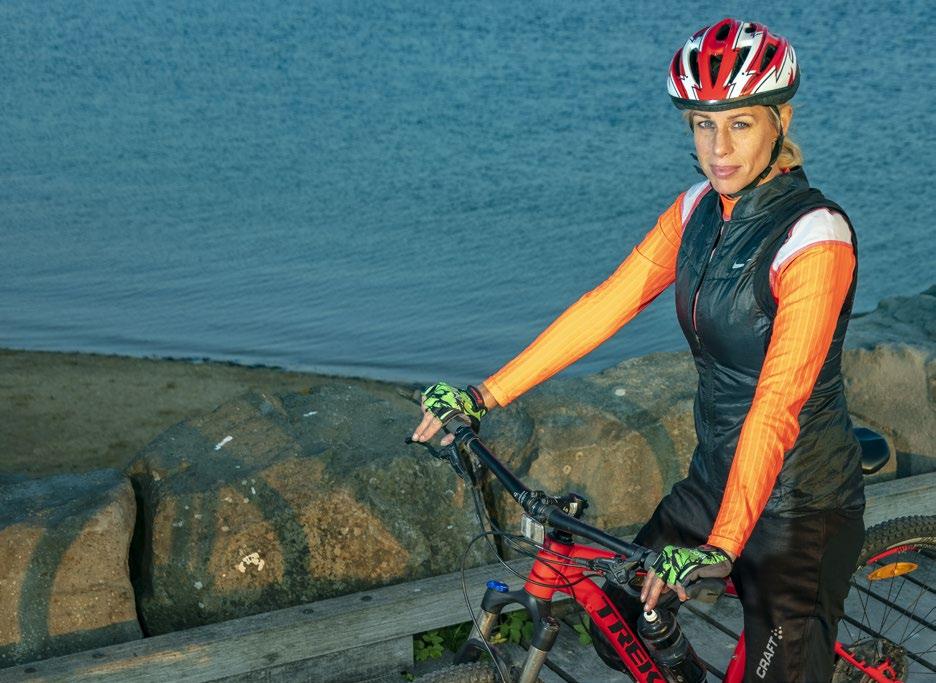
3 minute read
Icelandic Yuletide: 13 troll brothers and leaf-bread
TRADITIONS Christmas
Celebrating Icelandic Yule The Yule Lads in Dimmuborgir in North Iceland welcome guests during Advent.
TEXT: Eyglo Svala Arnarsdottir PHOTO: Marcin Kozaczek
Christmas is only a few weeks away. Snow covers the Dimmuborgir lava fields. By the gate to the volcanic wonderworld stands an ancient fellow with a long, grey beard and wearing traditional Icelandic woollen clothing. Door Slammer leans into his walking stick and smiles through his beard as he welcomes visitors. Kids, warmly dressed for the occasion, laugh cheerily as their parents pull them on toboggans down the hill leading into Dimmuborgir.
This is where the 13 Icelandic Yule Lads live. Every day from 1 December to Christmas Eve, people are invited to visit them here, learn more about their (bad) habits and traditions, and celebrate Yuletide the Icelandic way. I scramble up a rocky slope and into a cave where another Yule Lad carves thin slices from a leg of lamb and offers us a taste of the smoked meat. This must be Meat Hook. His brother Gully Gawk is there too. He has obviously gotten his hands on a bucket of milk, for he smiles from below his milk moustache. I walk carefully back down to greet other Yule Lads: Pot Scraper is knitting, Door Sniffer is handing out crisp leaf-bread, and Sausage Swiper barbecues sausages over an open fire. Children are quick to gather around him for a bite. Ladle Licker believes it’s a fine idea
to dance around the Christmas tree – except, there is no Christmas tree, so he balances his ladle on top of the next guy’s head and orders him to act like a tree, then leads a singing group of children around him.
Today is the second Saturday in December and that’s when the Yule Lads take their annual bath at the Myvatn Nature Baths. Visitors are welcome to join them and many are keen to bathe with the Yule Lads. Anticipation is rife when they arrive. They’re not wearing regular swimsuits but woollen underwear! They bring rough brushes to scrub themselves – and others – as well as rubber ducks and other toys. Skyr Gobbler refuses to bathe but sits by the poolside and feeds skyr to those who care for a taste with a large wooden spoon. When all the other lads are clean as a whistle, they sing carols on the bank before returning home. Inside the baths is a Christmas market with various handicrafts and local treats for sale.
In the evening, many Myvatn residents join guests at Sel – Hotel Myvatn for a Christmas buffet. As we’re about to finish desserts, unexpected visitors drop by, making a lot of noise: Door Slammer and Meat Hook sing and dance around the Christmas tree (an actual tree, this time) and afterwards hand out treats to the children. Everyone is left with a jolly feeling. May the Yuletide begin!
GETTING THERE:
Myvatn Akureyri
Reykjavik
Air Iceland Connect flies daily to Akureyri in only 40 minutes. From there it takes under an hour and a half to drive to Dimmuborgir by Myvatn.
→ airicelandconnect.com → visitmyvatn.is

Deep-fried snowflakes
As Christmas draws near, a whole host of cultural activities are set in motion in Icelandic households.
INGREDIENTS:
1 kg (2.2 lb) flour 50 g (1.75 oz) butter 1 tsp. baking powder 1 tsp. salt 1 tbsp. sugar 7 dl (3 cups) milk Coconut oil or Icelandic tolg for frying the bread
TEXT: Lisa Gail Shannen PHOTO: Roman Gerasymenko
Originating in North Iceland, laufabraud (“leaf-bread”) – a wafer-thin, crisp flatbread carved with intricate patterns – is now made all around the country. The activity usually involves the whole family, but there are also events such as the annual workshop at Videy island off Reykjavik. The following laufabraud recipe (for 30 pieces) was provided by Principal of the Icelandic School of Home Economics, Margret D. Sigfusdottir.
METHOD:
Melt the butter in a pan, add milk and heat until almost boiled. Pour over the flour, baking powder and salt, then add the sugar and stir. Knead the dough until smooth and divide into 30 balls. Roll each ball into wafer-thin, approximately 18-cm (7") disks on a floured surface (a plate can be used to measure). Use a paring knife to create a pattern of nested Vs. Fold back every other V and press down the dough. Separate each bread with greaseproof paper and cover with a damp cloth. Fry separately in hot oil (200°C / 390°F) for around 10–15 seconds on each side. Press the warm bread with a lid or similar tool on a paper towel.










